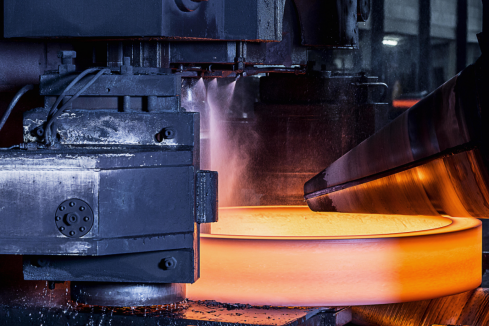
Yield point
When the stress of a steel or specimen exceeds the elastic limit during stretching, even if the stress no longer increases, the steel or specimen continues to undergo significant plastic deformation, which is called yield. The minimum stress value at which yield occurs is the yield point.
Yield strength
Yield strength is the yield limit of a metal material when yielding occurs, which is the stress that resists minimal plastic deformation. For metal materials without obvious yield phenomenon, the stress value that produces 0.2% residual deformation is specified as its yield limit, which is called the conditional yield limit or yield strength. External forces greater than this limit will cause permanent failure of the parts and cannot be restored. If the yield limit of low-carbon steel is 207MPa, under the action of external forces greater than this limit, the part will undergo permanent deformation. If it is less than this limit, the part will return to its original appearance.
Yield limit, commonly used symbols σ s. It is the critical stress value for material yield.
Hardness
Hardness refers to the ability of a material to resist hard objects pressing into its surface locally, and is one of the important performance indicators of metal materials. Generally, the higher the hardness, the better the wear resistance. Common types include Brinell hardness, Rockwell hardness, and Vickers hardness. For measurement accuracy, Vickers hardness is greater than Brinell hardness, and Brinell hardness is greater than Rockwell hardness.Vickers hardness is expressed in HV. It is suitable for hardness measurement of larger workpieces and deeper surface layers. Vickers hardness still has a small load Vickers hardness, with a test load of 1.961~<49.03N. It is suitable for measuring the hardness of thinner workpieces, tool surfaces, or coatings; Micro Vickers hardness, test load<1.961N, suitable for hardness measurement of metal foils and extremely thin surface layers.
The Brinell hardness is represented by HB. With a larger indenter and larger testing force, a larger indentation can be obtained, which enables the measurement of the performance of a larger range of specimens. There is an approximate conversion relationship with tensile strength. The measurement results are relatively accurate. It causes significant damage to the surface of the material and is not suitable for measuring the finished product. The measurement process is complex and laborious. Suitable for measuring the hardness of gray cast iron, bearing alloys, and metal materials with coarse grains, suitable for measuring the hardness of raw materials and semi-finished products.
Rockwell hardness is expressed in HR. When HB>450 or the sample is too small, the Brinell hardness test cannot be used and Rockwell hardness measurement should be used instead. According to the hardness of the test material, it is divided into three different scales to represent:
HRA: It is the hardness obtained using a 60kg load and a diamond cone press, used for materials with extremely high hardness, such as hard alloys
HRB: It is the hardness obtained using a 100kg load and a 1.58mm diameter quenched steel ball, used for materials with lower hardness, such as annealed steel, cast iron, etc
HRC: It is the hardness obtained using a 150kg load and a diamond cone press, used for materials with high hardness, such as quenched steel.
Post time: Oct-27-2023

